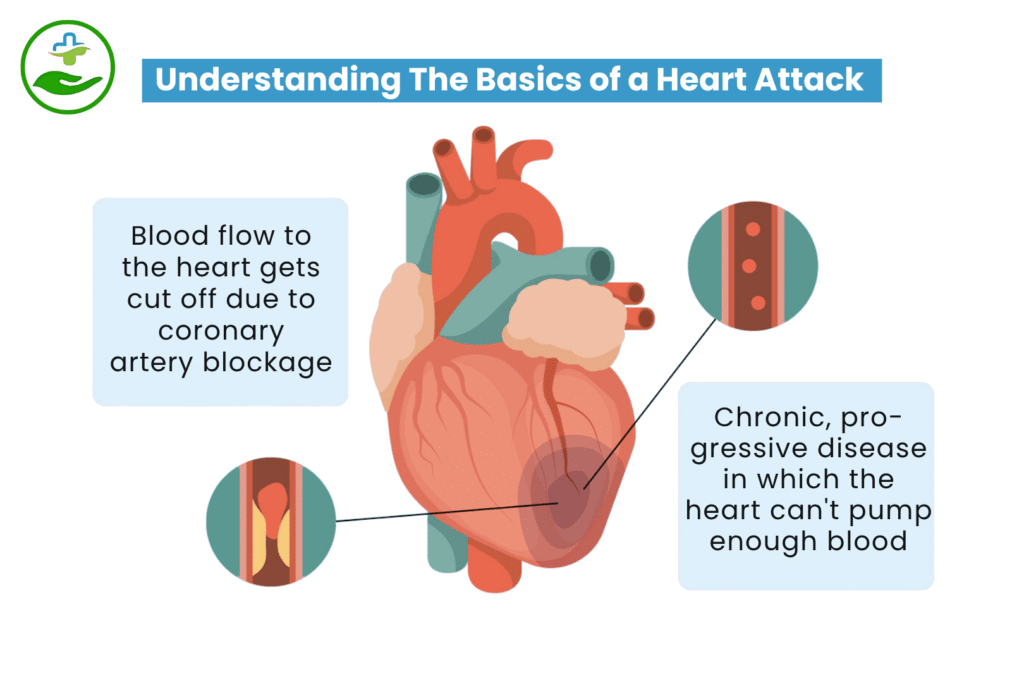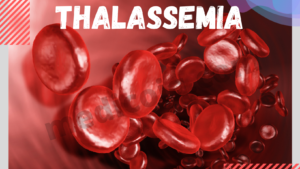When you think of a heart attack, sharp chest pain likely comes to mind. But what if your body was warning you in a more subtle way, like pain in your back?
It might surprise you to learn that back pain can sometimes be a symptom of a heart attack, especially in women and older adults. Unfortunately, many people dismiss it as a pulled muscle or bad posture.
In this post, we’ll explore the hidden connection between back pain heart attack, helping you recognise when back pain is more than just an ache.
Early recognition could save your life or the life of someone you love.
Understanding The Basics of a Heart Attack

What Is a Heart Attack?
A heart attack, or myocardial infarction, occurs when blood flow to the heart muscle is blocked often by a buildup of plaque in the arteries.
This lack of oxygen-rich blood can cause serious damage or death to parts of the heart muscle.
Typical Heart Attack Symptoms
While chest pain is the most common symptom, it’s not always present, especially in women. Classic symptoms include:
- Chest discomfort or pressure
- Shortness of breath
- Pain in the arms, neck, jaw, or stomach
- Cold sweat, nausea, or lightheadedness
However, heart attacks can also come with a typical symptoms, including back pain.
Don’t let shortness of breath slow you down—discover the secrets behind Dyspnea on Exertion and take control of your breath today!
Can Back Pain Be a Sign of a Heart Attack?
How Heart Attacks Can Present With Atypical Symptoms
Not all heart attacks feel the same. In fact, women, older adults, and people with diabetes are more likely to experience non-traditional symptoms like pain in the back, jaw, or fatigue.
This makes early detection more difficult and dangerous.
Why Back Pain Occurs During a Heart Attack
The nervous system plays a key role here. When a heart attack occurs, pain signals can travel along nerves that also serve the back, especially the upper or between the shoulder blades region.
This is known as referred pain.
Back Pain Heart Attack: Key Signs To Watch For
- Sudden onset of upper back pain without a known cause
- Pain radiating from the chest to the back or shoulders
- Pain that feels like pressure or squeezing
- Back pain accompanied by nausea, shortness of breath, or fatigue
If you experience any of these, especially if you’re at risk for heart disease, don’t ignore it.
Who Is Most at Risk of Experiencing Back Pain During a Heart Attack?
- Women: More likely to have symptoms like back pain, jaw pain, nausea, and fatigue instead of classic chest pain.
- Older Adults: May experience less intense symptoms that are easily overlooked.
- People with Diabetes: Often have “silent” heart attacks due to nerve damage, masking chest pain.
How To Differentiate Between Back Pain Heart Attack Pain
Muscular or Skeletal Back Pain
- Often linked to activity or poor posture
- Localized to one side
- Worsens with movement or pressure

Heart Attack-Related Back Pain
- Feels deep, pressure-like, or squeezing
- Comes on suddenly, without a clear cause
- May be accompanied by other symptoms like shortness of breath or dizziness
When To Seek Emergency Help
Call 911 or emergency services immediately if:
- Back pain appears suddenly and is severe
- It’s accompanied by other signs of a heart attack
- You feel unwell, dizzy, or short of breath
Diagnosing The Cause of Back Pain
If you go to the ER with unexplained back pain, your medical team may perform:
- Electrocardiogram (ECG) to check heart rhythms
- Blood tests for cardiac enzymes
- Imaging like chest X-rays or echocardiograms
A cardiologist may also get involved to evaluate whether the back pain is heart-related.
Prevention & Heart Health Tips
Lifestyle Tips To Reduce Heart Attack Risk
- Eat a heart-healthy diet (rich in fiber, low in saturated fats)
- Exercise regularly (30 minutes most days)
- Quit smoking and reduce alcohol intake
- Maintain a healthy weight
- Manage stress through meditation, sleep, or hobbies
Regular Checkups & Screenings
- Monitor blood pressure, cholesterol, and blood sugar
- Discuss family history and risks with your doctor
- Consider routine heart screenings if you’re over 40 or have risk factors
Conclusion
Back pain can be more than a musculoskeletal issue, it could be your body warning you of a heart attack. While it’s not the most common symptom, it’s especially important to watch for it in women and older adults.
Don’t brush off sudden or unexplained back pain, especially when paired with other symptoms like shortness of breath or nausea.
Understanding the link between back pain heart attacks could make the difference between life and death. If in doubt, always err on the side of caution and seek medical attention.
Frequently Asked Questions (FAQ)
Q1. Is upper back pain a sign of a heart attack?
Ans. Yes, especially if it’s sudden, unexplained, and accompanied by other symptoms like fatigue, shortness of breath, or chest discomfort.
Q2. How can i tell if my back pain is related to my heart?
Ans. Heart-related back pain is usually deep, pressure-like, and may radiate from the chest. It isn’t triggered by movement or posture.
Q3. Can a heart attack cause back pain without chest pain?
Ans. Yes. Some people, especially women and diabetics, may experience a heart attack without chest pain. Back pain could be the main symptom.
4. What should i do if i think my back pain is heart-related?
Ans. Call emergency services immediately. Don’t try to drive yourself or wait to see if it improves.







